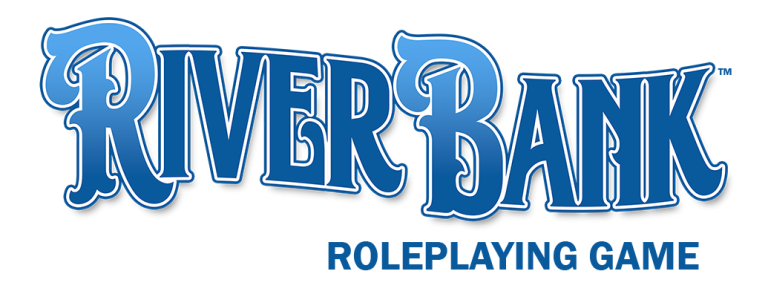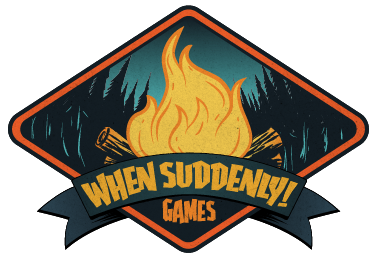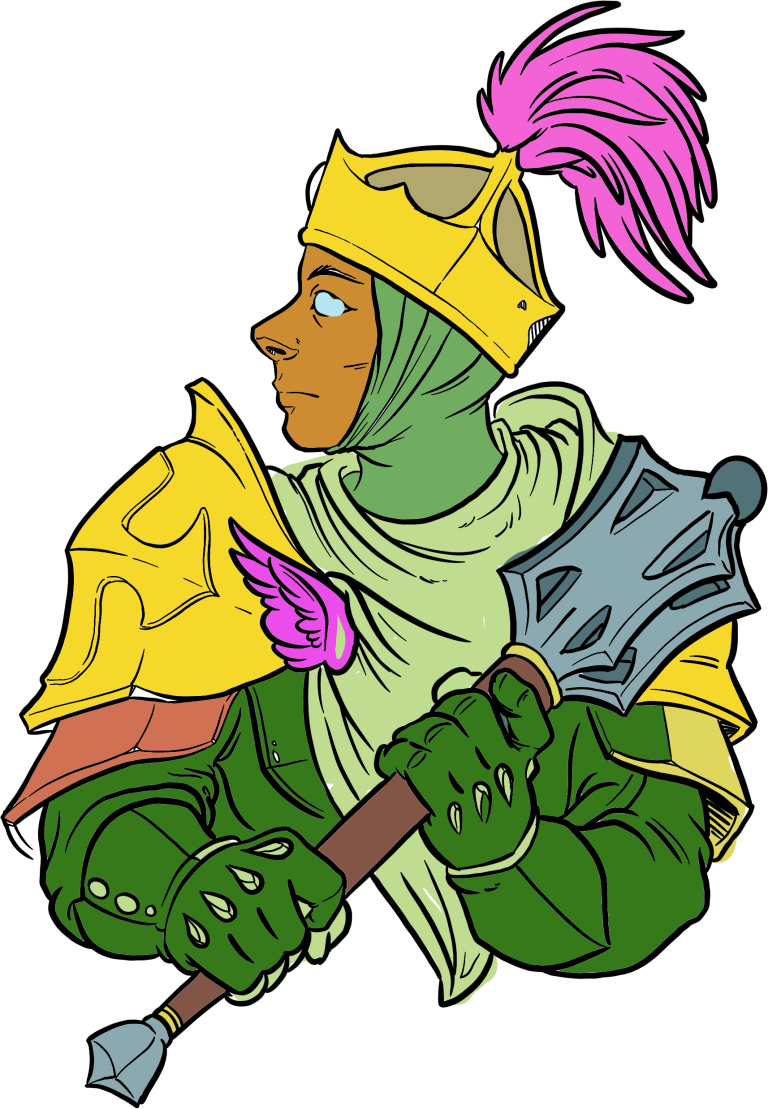By Jason Campbell
We just concluded our first successful crowdfunding campaign for our upcoming game, Six-Gun Doomsday and I wanted to summarize my thoughts on our campaign, and on crowdfunding in general.

Introduction: This Wasn’t (Exactly) Our First Rodeo
We had released a few short adventures in PDF only, but a few years ago I had some ideas for bigger projects that would likely require a crowdfunding campaign. I knew these aren’t easy things to do and there was likely a lot we had to learn. In January 2024 I attended a seminar in indie game development organized by Goodman Games which included several sessions about crowdfunding games.
Based on what I learned we had some challenges. One major challenge was that Backerkit and Kickstarter will both say that nearly all successful campaigns get ~70% of their contributions through their email lists. That might be surprising to those who live in social media and think of email as old tech. Email is just “stickier” than a lot of other socials. This is one of many reasons to start planning well in advance of your planned launch. We did not have an email list, so we were already between a rock and a hard place. I realized that there were other lessons that we needed to learn to succeed that only experience could teach us. So we decided to launch a smaller campaign, knowing it would likely not succeed, so that we’d be prepared for a larger campaign to come later.
Some Cautions
We weren’t planning to fail. In June 2024 we launched a Kickstarter campaign for a project called The Light Fantastic, a collection of light hearted one-shot adventures for Monte Cook’s Cypher System. Some were updates to older adventures and some new adventures. At launch the product was not complete, it was only a bit further than the outline stage. These adventures I love and am very proud of, so when I say it was likely to fail that’s based on what I knew about successful campaigns and the challenges we faced. It was a prediction, not a plan.
Doing this is a risky strategy. A lot of pledges for crowdfunding campaigns will come from people that know you – readers of your previous work, viewers of your YouTube channel, etc. Those potential pledgers only have your previous record to judge you on, which not only includes your creative work, but your record in earlier crowdfunding efforts. Starting with a failure might not doom your campaign, but it can be a strike against you.
The Light Fantastic campaign did fail, and I collected all teh things we’d learned so we’d be better informed the next time.
Preparing for The Big One
In early 2025 I decided to try another crowdfunding campaign for the game Six-Gun Doomsday. I’d been writing and running that setting for more than 6 months, and I was confident in its quality and potential. We started different methods to build an email list from our web site and other outlets, which was not a huge success. That meant we would need to rely on other social media which is known for being more fickle. Social media such as Bluesky is great but you can’t guarantee that your message will get in front of the eyes you want to see it. It’s a great way to get the word out, but your return (click-throughs) is likely to be lower than if you were talking to people who already support you.
I planned to launch in the summer, so we had more than 6 months to plan. We built assets such as artwork and advertising. We planned for a launch at the beginning of August and three months before that we launched a preview video and built a coming soon page on Backerkit, so we could start promoting it and build a followers list.
Kickstarter Versus Backerkit
Which crowdfunding platform is better is the most common question I’m asked. Different campaigns might have different reasons for their choice. For those new to crowdfunding, Backerkit is not a “new” company to crowdfunding. They handled much of the financial aspect behind the scenes of Kickstarter before they began their own creator and consumer facing platform.
Kickstarter is better known, but that isn’t necessarily a deciding factor. In the early days of crowdfunding games, a campaign might get pledges from people directly through the platform who were looking for interesting games. The crowdfunding space has become so large, this is rare now. One of the most important things to realize is that virtually no one will stumble across your campaign – you’ll need to drive all the traffic to your campaign for it to succeed. This means that awareness of Kickstarter vs. Backerkit need not be a deciding factor. However potential pledgers that are completely unfamiliar with Backerkit might be hesitant about giving their credit information to yet another online platform, so you might want to consider that. Of course you need to look at the most important things; the % of pledges that each platform takes, and the support for your backers. Both patforms detail these for creators, so you’ll nbeed to do your research. At the time of this writing these items were fairly similar, but policies can change anytime so it’s worth doing your homework.
We chose Backerkit for reasons specific to our campaign. Six-Gun Doomsday uses the Cypher System, and Monte Cook Games has been using Backerkit for all of their campaigns for several years. That meant that the Cypher community was familiar with Backerkit and many even had a preference for it. Choosing Backerkit was an advantage for us because of our particular project.
Setting Up the Details of Your Campaign
When you set up your coming soon page you should start building the details, including a schedule for launch, pledge levels and add on items. It’s important to spend a lot of time building your story, which includes text, images and video. It’s confirmed that campaigns with a video have a higher success rate than those that don’t. Video and art are not easy, but they should be considered essential. They may not be something you know well, but this is a reason to reach out to your community. Enlisting others’ help in these areas can be critical.
Both Backerkit and Kickstarter have a lot of behind the scenes help geared towards those new to crowdfunding. It’s important to take advantage of everything available. Set aside time to read all available advice and include it in your planning.
You Can’t Do This Alone
Unless you have an email list you’re regularly using or a huge community of followers, you can’t do this alone. When we’ve mentioned community, this includes everyone you’re in contact with. That includes Discord servers where you participate regularly, YouTube and podcasts you follow and interact with and others you talk to on social media, Facebook, etc. If you’re a positive contributor – someone supportive and helpful to others – you’ll find others will be open to helping you as well. It’s very important to note that this is not a recommendation to “use” people or communities. Joining a bunch of Discords just to post your marketing won’t help as it’s not genuine. Be a positive person and you’ll likely find the favor returned.
No matter how brilliant your idea is, you need help.
Keep At It
You will probably get a lot of support when your campaign launches, but don’t take these supporters for granted. Make sure you email and post to them throughout the campaign – let them know about appearances, FAQ and stretch goals. Keeping your backers excited can mean that word of your project gets out further. Your backers can also cancel at any time, so you need to keep them excited and involved.
Your Funding Profile
Not that long ago we would refer to the pattern of funding of most crowdfunding campaigns as “U shaped”. That’s because it’s common to have a big burst of support at the beginning, hopefully at least 50%, then the campaign slows in the middle, and then another burst at the end. This burst at the end is due to two factors: FOMO, others who weren’t convinced earlier are afraid they’ll miss out, and early backers upgrading their pledge, often due to stretch goals tied to higher pledge levels. While the initial burst is still common, over the past few years the “L shaped” campaign is more common (with a serif at the end of the leg of the “L”). The burst at the end is present, but much smaller than it was in the past. This is likely due to economic reason as well as the multitude of games in crowdfunding.
Are You Done Yet?
Most people understand that the reason for crowdfunding was for those with great ideas but lacking the means to realize it, to get funds in advance. The platforms are still available for that situation (which is where our project is), but many campaigns, especially larger ones, use crowdfunding as a business model with one campaign funding the following one in the future. This means that in many cases the product is available right after the campaign concludes.
If your product is not competed, as in most small campaigns, you should explain the planned dates of release. Even if the dates aren’t exact a rough estimate will help.
You Only Need That Much?
You may have seen crowdfunding campaigns with goals stated as $10,000 and then the campaign ends up raising over $500,000. It’s pretty amazing, but it’s become a shell game. Especially with larger campaigns, a company might know they need $100,000 to be profitable but state that their funding goal is $10,000. This is so they can claim “funded in 15 minutes!” or “20x funded!” in later ads. The thinking here is that you can motivate those people who are hesitant to pledge with the idea that “everyone else loves it!”.
This holds a lot of risks especially for smaller campaigns. While you may not need a giant profit, you want to avoid having to spend your own money to fund the project after the campaign concludes. Although the thinking behind the “use a tiny funding goal” method is acknowledged as a best practice by many, there’s no specific evidence how much additional funding it raises.
Conclusion
Our Backerkit campaign for Six-Gun Doomsday succeeded in raising a little over $2,000 in 28 days. My assessment is that the difficulty in reaching that goal and not funding higher than that goal is due to this being our first real campaign and the lack of an email list. The reasons we were successful I’d attribute to connections we’ve made in many parts of the TTRPG community (thanks to Teos Abadia, Shawn Merwin, Wes Allen, Daddy Rolled a 1, the Cypher Unlimited crew and all the others who helped get the word out).
Crowdfunding is a great bonus for game designers who in the past were resigned to sit home dreaming of their games being produced by a big game company. There’s a lot to consider, but please use this article as advice on the best practices, not a cautionary tale to scare you from your campaign.
What do you think? Do you have other experiences in crowdfunding campaigns? Let us know!





